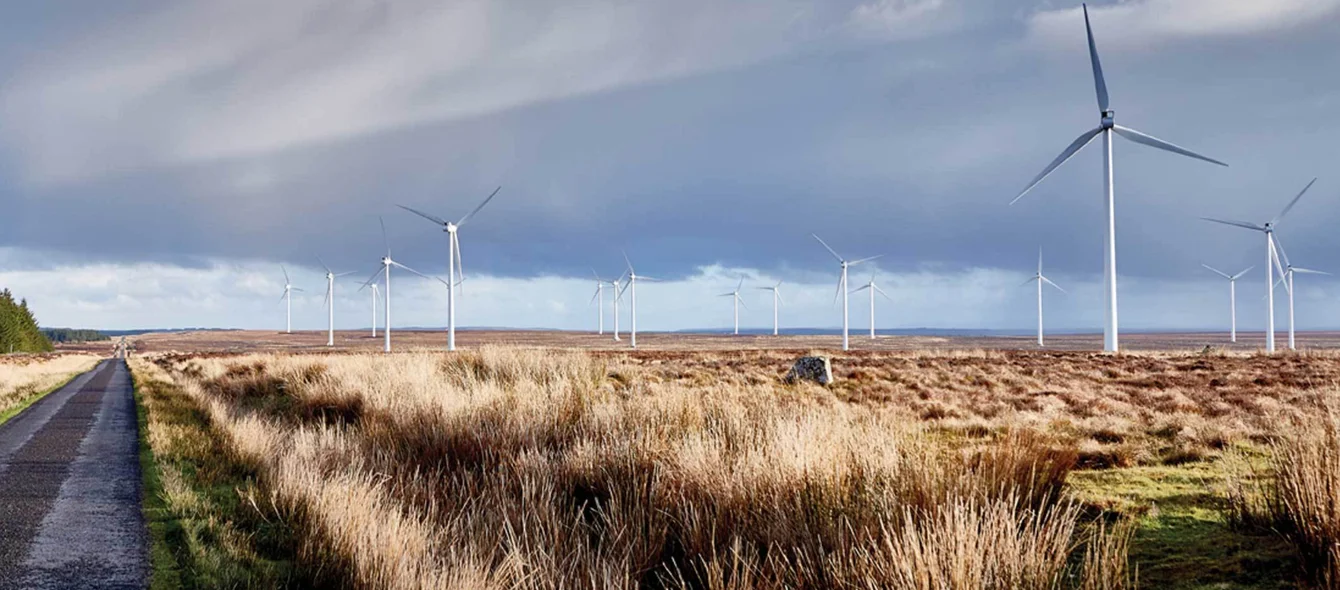Launching a consultation in March, the UK government has proposed overturning its moratorium on support for onshore wind and solar PV development, a decision which promises to rejuvenate the UK’s pipeline of onshore wind projects.
The previous policy, introduced in 2015, meant that onshore wind projects and solar PV could no longer apply for support under the government’s Contract for Difference (CfD) scheme. It also introduced new requirements for public consultation, saying that onshore wind farms should only be approved, if the development site was in an area identified as suitable by local authorities.
This policy did not stop onshore wind completely, but certainly slowed the pace of new developments. From the installation of 2,683 MW of new capacity in 2017, new onshore wind installations in the UK fell to 651 MW in 2018 and 629 MW in 2019.
Most of these projects were completed with the aid of a CfD approved. But, last year, only 6.9 MW of new capacity received planning approval in England, 25 MW in Northern Ireland and none in Wales, according to industry body RenewablesUK.
However, in Scotland, the project pipeline has proved more resilient with 556 MW of capacity consented in 2019 and 1,969 MW submitted for planning approval.
Under the UK government’s new proposal, new onshore wind projects would be able to participate in the next CfD auction in 2021. This suggests that the slowdown in new installations could start to be reversed, with wind farms in Scotland having a significant head start.
Public opinion
Developers will still have to consult closely with communities and local and central authorities to progress suitable sites for development.
Any new onshore wind farm must still be on a site designated as suitable by local authorities and demonstrate that local community concerns have been fully addressed.
This is quite a high bar for developers, despite strong public support for onshore wind. The government’s latest survey of opinions in 2018 – the Energy and Climate Change Public Attitude Tracker – showed a new peak in public support for renewable energy at 85%, with opposition extremely low at 3%. Specifically, support for onshore wind was strong at 76%.
Onshore wind farms are a key technology in tackling climate change and reaching net zero. In a report released in May 2019, the UK’s Committee on Climate Change recommended that onshore wind capacity should be expanded from about 13 GW now to 35 GW by 2035 to get on track to meet the government’s net zero emissions target by 2050.
Low cost bonus
According to the latest annual study by investment bank Lazard on the levelised cost of electricity, onshore wind costs had fallen last year to just $28-$54/MWh — £21.2-£50.0/MWh. This was cheaper than any other form of electricity generation, renewable or fossil fuel, so the government’s proposal is certainly good news for consumers.
But it also prompts the question, if onshore wind is so cheap, why does it need support at all?
The CfD scheme is more of a guarantee than a direct subsidy and projects may not receive any government money at all, potentially even paying money back to the state.
The CfD sets a ‘strike’ price, which is arrived at by competitive bidding to achieve the lowest price for the country’s electricity. If wholesale electricity prices are above the strike price, when the project starts generating power, developers pay money back to the government.
Once built, technologies such as wind and solar have no fuel cost and this tends to depress wholesale electricity prices. Before they invest either their own or borrowed capital, developers need some certainty (the CfD) that they will not be in the red when the wind farm starts generating power.
Funding pots
Onshore wind is seen as an established technology and will therefore compete against other established technologies for ‘pot 1’ CfD funding.
The government proposes that conventional offshore wind – i.e. farms with fixed-bottom installations – continues to be treated as a non-established technology and will therefore compete in CfD rounds for a separate funding pot. A new funding pot may also be created for floating offshore wind farms.
The government’s proposal is therefore likely to result in a controlled revival of onshore wind, focussed on designated sites with low environmental impact, for example in less-populated areas of Scotland, rather than more densely-populated areas such as southern England. More low-cost, low-carbon wind energy onshore and the separation of funding pots will complement the necessary expansion of offshore wind, putting the UK more firmly on the path to net zero emissions by 2050.
Photo credit: © RWE AG
